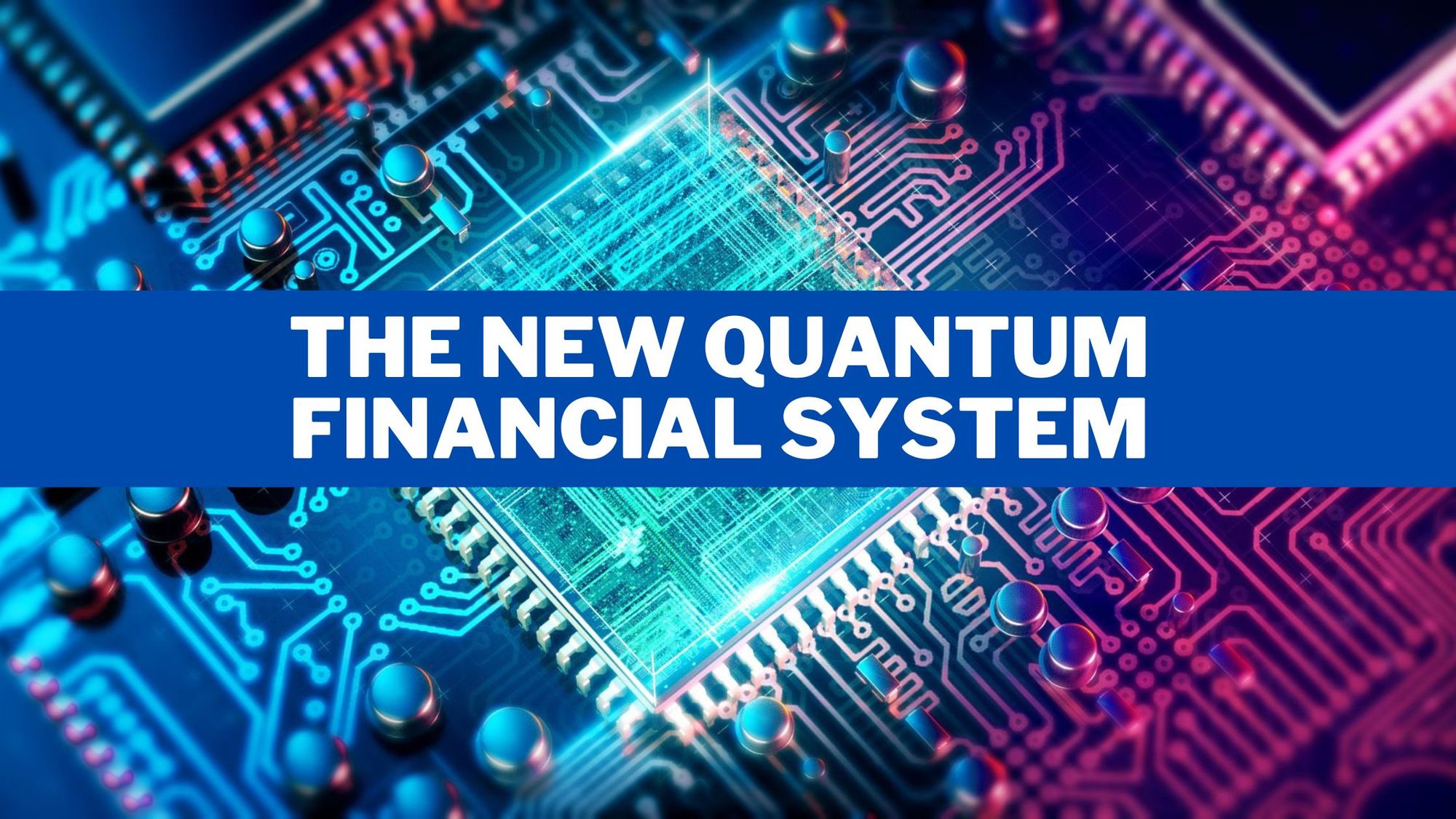What is ISO 20022?
ISO 20022 is a global standard for electronic data interchange between financial institutions, focusing on the standardization of message formats used in financial communications.
While this may sound complicated, it just means the agreement of a common language between financial institutions.
The Significance for Cryptocurrency Investors
This is important for cryptocurrency investors, as we are seeing a global move towards digital currencies. This is exemplified by the creation and use of many sovereign nation Central Bank Digital Currencies (effectively another type of cryptocurrency). There is a long-held belief that once this new digital system is fully implemented, those cryptocurrencies that are ISO 20022 compliant will dramatically increase in price.
Join the Crypto Revolution:
As one of the fastest-growing industries in the world, cryptocurrency is constantly changing and developing. Our newsletter provides you with the latest news, trends, and insights that you need to stay informed and make informed decisions.ISO 20022 and Cryptocurrencies
ISO 20022 will also be used to support the integration of cryptocurrencies into traditional financial (banking) systems, such as payment networks and clearing and settlement systems. With the use of a standardized messaging format (ISO 20022), cryptocurrencies can be seamlessly integrated with existing and future financial systems, making them more accessible and easier to use.
With the use of cryptocurrencies and the adoption of ISO 20022, there will be greater transparency as the transactions will be immutably recorded on the blockchain, helping to improve transparency and help to reduce the risk of fraud and money laundering.
While the ISO 20022 standard is not specific to cryptocurrencies, this standard is already being integrated with cryptocurrencies to be used in the broader financial system.
The ISO 20022 standard is one of the many initiatives taken to upgrade and improve the international and global monetary systems, which includes the creation of CBDCs and the adoption of blockchain technology into a new blockchain-based global financial network, many are dubbing the New Quantum Financial system.

When will ISO 20022 be Implemented?
The implementation timeline for ISO 20022 varies depending on the financial institution, market, and country. Many financial institutions and markets have already migrated to ISO 20022, while others are still in the planning stages.
Banking Sector
In the banking industry, the migration to ISO 20022 for cross-border payments is scheduled to take place between 2022 and 2025, with some markets having already implemented the standard.
The migration timeline for domestic payments varies by market, with some countries planning to complete the migration by 2023, while others have set later deadlines.
Securities Sector
In the securities industry, many markets have already implemented ISO 20022 for securities messaging, while others are still in the planning stages.
The migration timeline for the securities industry varies by market and asset class, with some markets planning to complete the migration by 2023, while others have set later deadlines.
Cryptocurrency Sector
The implementation timeline for ISO 20022 in the cryptocurrency industry is not yet clear, as the standard is not specific to cryptocurrencies and its adoption will depend on market demand and regulatory requirements.
A few cryptocurrencies, cryptocurrency exchanges, and payment providers have already implemented ISO 20022 messaging protocols to improve interoperability and support integration with traditional financial systems.
Overall, the implementation timeline for ISO 20022 is likely to vary depending on the specific use case, market, and regulatory environment, but the standard is expected to be widely adopted across the financial industry on or before 2025.

What are ISO 20022 Compliant Cryptocurrencies?
ISO 20022 compliant cryptocurrencies are those that use ISO 20022 messaging protocols for their transactions and communications.
By using ISO 20022, these cryptocurrencies can benefit from a standardized messaging format that can improve interoperability and reduce errors and discrepancies in transactions.
Top ISO 20022 Compliant Cryptocurrencies
There are seven cryptocurrencies that are recognized as ISO 20022 compliant:
Quant (QNT)
Quant launched in June 2018, is considered the over-ledger with the goal of connecting (ISO 20022) blockchains and networks on a global scale, without reducing the efficiency and interoperability of the network.
Quant, with its overledger technology, is slated as one of the key components of this system and the interoperability between other cryptocurrencies.
Quant is the first blockchain project to solve the interoperability problem through the creation of the first blockchain operating system and will be a key component of the interconnectivity of all other cryptocurrencies within this network.
Ripple (XRP)
The XRP Ledger (XRPL) is an open-source, permissionless, and decentralized technology. Benefits of the XRP Ledger include its low cost ($0.0002 to transact), speed (settling transactions in 3-5 seconds), and scalability (1,500 transactions per second).
Ripple is a global payments network and also has onboarded many major banks and financial services as its customers. The purpose of XRP is to serve as an intermediate medium of exchange between two currencies or networks, acting as a temporary settlement layer denomination.
XRP is a digital currency and acts as a bridge currency to other currencies, primarily for cross-border and international transfers. The XRP Ledger also features the first decentralized exchange (DEX) and custom tokenization capabilities built into the protocol.
Ripple has publically announced they are part of the ISO 20022 Standard body.
Stellar (XLM)
Stellar is a peer-to-peer (P2P) decentralized network created in 2014 by The Stellar Development Foundation. Officially launched in 2015 to connect the world's financial systems (ISO20022) and ensure a protocol for payment providers and financial institutions.
The platform is designed to move financial resources swiftly and reliably at a minimal cost. Stellar links individuals, banks, and payment processors and offers its users the ability to create, send, and trade multiple types of crypto.
The basis of the network is its native digital currency - XLM or Lumens. XLM acts as an intermediate currency for operations and is also used to pay transaction fees. The Stellar protocol works by converting the transaction, first into XLM and then into the requested currency.
Hedera (HBAR)
Hedera is the most used, sustainable, enterprise-grade public network for the decentralized economy that allows individuals and businesses to create powerful decentralized applications (DApps).
Hedera Hashgraph’s most unique feature is the mechanism used for grouping transactions called, a hashgraph. It's claimed that this allows the Hedera to process more transactions more cheaply than existing blockchains. The Hashgraph is a patented algorithm and is currently the only cryptocurrency with such a patent.
The Hedera Hashgraph is the first iteration of the algorithm that is used in a public network.
IOTA (MIOTA)
IOTA is a distributed ledger with one big difference: it isn’t actually a blockchain. Instead, its proprietary technology is known as Tangle, a system of nodes that confirm transactions.
Tangle is a proprietary technology, termed a consensus algorithm that requires users to validate two transactions in order to complete their own IOTA transactions. Technically, it is a direct acyclic graph (DAG) consensus algorithm.
With this new form of consensus algorithm, there are no miners or validators, no blocks, and no transaction fees. This allows the crypto to “overcome cost and scalability issues of blockchain,” according to the IOTA website.
XDC Network (XDC)
The XDC Network (formerly called XinFin Network) is an enterprise-grade, EVM-compatible, hybrid blockchain, equipped with public and private states and interoperable smart contracts. It was primarily created for multinational business, cross-border payments, and finance.
A highly optimized, bespoke fork of Ethereum and J.P. Morgan’s (now ConsenSys’s) Quorum, the XDC Network reaches consensus through a delegated proof-of-stake (dPoS) mechanism, which allows for two-second transaction time, near zero gas fees, and over 2,000 transactions per second (TPS).
Algorand (ALGO)
Algorand is considered both a digital currency and blockchain platform. This project has also been labeled the "Ethereum Killer" as it can host other cryptocurrencies and blockchain-based projects, like Ethereum. The Algorand platform is designed to process high-volume transactions quickly, similar to popular payment processors like Mastercard and Visa.
A unique feature of Algorand is that it uses a modified version of the “proof-of-stake” consensus mechanism. While the traditional proof-of-stake method allows cryptocurrency holders to opt into validating transactions, the pure-proof-of-stake method recruits validators from the entire pool of ALGO holders. All ALGO holders who stake their ALGO are rewarded every time a new block is added to the Algorand blockchain.

Join Our Community of Crypto Investors
Sign up today and receive our exclusive content and join the growing community of savvy investors who are taking advantage of the many opportunities in the crypto space.Maximize Your Crypto Investment
The #1 Crypto and Forex Trading Course is Asia Forex Mentor
Cryptocurrency is one of the hottest types of investments right now and Bitcoin is widely being recognized as the best-performing financial asset in the last decade.
This is where the Asia Forex Mentor course stands as your gateway to cryptocurrency investing mastery. It doesn't just educate—it empowers you with a deep understanding of the market, turning complexity into clarity and transforming potential into profit. With this course, you gain more than insight; you gain a competitive edge in the bustling crypto marketplace.
Get expert insights from our team
Are you interested in staying ahead of the game when it comes to the ever-evolving world of cryptocurrency?
As one of the fastest-growing industries in the world, cryptocurrency is constantly changing and developing. Our newsletter provides you with the latest news, trends, and insights that you need to stay informed and make informed decisions.
Our team of expert analysts scours the market to provide you with timely information on the newest coins, emerging trends, and regulatory changes that could impact the market. You'll also receive valuable tips on trading and investing strategies to help you maximize your returns (see: trade return calculator).
With our cryptocurrency newsletter, you'll be the first to know about exciting developments in the world of blockchain and cryptocurrency, giving you a major edge over the competition.
Join the Crypto Revolution:


